Apple now has a customer base of more than 250 million paid subscriptions across its Services offerings of Apple Music, iCloud and App Store continuing payments. Viewed against Amazon's recent announcement of 100 million Prime members, that figure is substantial. But Apple is also adding around 30 million new subscriptions every quarter.
Apple primes the subscription pump
In February, Apple's chief executive Tim Cook noted App Annie data showing that its iOS App Store "continues to be the preferred destination for customer purchases by a very wide margin, generating nearly twice the revenue of Google Play."
That's easily true worldwide, given that Google Play doesn't even materially participate in China, the world's largest market for mobile software. In the U.S., recent data from Sensor Tower showed that Apple has a wide lead over Google in the revenue it gets per average user, which includes downloads, In-App Purchases and ongoing subscriptions.
Of course, Apple's business model differs dramatically from its competitors. Apple alone is generating massive yet sustainable, ongoing revenues from sales of premium mobile hardware. That's an area where Google has failed despite years of struggling and where other contenders have simply given up, notably Microsoft's ill-fated Windows Mobile, Facebook's various phone flops and the total meltdown of Amazon's expensive Fire Phone project.
Yet while Apple is raking in virtually all of the profits in the global smartphone industry— despite phony reports by Nikkei and from the Wall Street Journal about the supposed "failure and disappointment" of iPhone X which alone gobbled up more than a third of all the money made in selling phones of any kind— it's also beating everyone in the surrounding ecosystem of software and services as well.
That's historically unprecedented. Apple has long managed to finagle profits from premium hardware while its rivals struggled to profit from PCs, MP3 players, phones, tablets and watches. But back in the early days of the Mac, Apple's software efforts were no match for Adobe, Microsoft and other major developers.
Apple's iTunes powerhouse driving content for iPods was largely run as a break-even effort, and the App Store was similarly viewed as a way to foster innovative, creative software titles for iOS devices rather than being a cash cow. Other ecosystem rivals struggled to compete against iTunes and the App Store, with Microsoft throwing in the towel on Zune Marketplace and Samsung giving up on Milk Music, for example.
Yet over the past few years, Apple has converted its Services businesses from a way to culture curated content into a cornucopia of cash creation. Ongoing first and third-party subscriptions are key to that shift.
An Apple a day keeps the servers OK
Apple's first hand subscription offerings, notably Apple Music and iCloud, are not merely speculative stabs at creating a customer base to later monetize in the future somehow, but are (like iTunes and the App Store) already self-supported enterprises that fund their own expensive growth of server farms and the inherent expenses of paying royalties to artists and lighting up and cooling down global data centers with clean energy.
There isn't much room for profit margins in just selling streaming music subscriptions, as is seen in the failure of Spotify to generate an operating profit. Yet Apple's size and scale of subscribers will enable it to exist even as Spotify struggles to fund its own expansion.
Additionally, Apple also obviously has side businesses that Spotify lacks: Apple Music drives sales of iOS devices, AirPods and the new HomePod (regardless of whatever phony media narrative Bloomberg can invent about its supposed "failure and disappointment" as a product and assumptions derived from supply channel rumors). Spotify's own speaker remains vaporware, and there's little potential for pulling material licensing revenue out of third-party Spotify-connected speakers.
Amazon's Alexa platform is similarly hailed as a rival to Siri, HomeKit, HomePod and so on, but Alexa doesn't generate significant direct revenues. Apple's Siri-powered devices actually do, in addition to creating a much larger platform that adds value to other products Apple sells (and which Amazon lacks, such as a smartphone). Amazon is currently selling a series of loss leaders that direct to sales of other loss leaders, sort of like the SNL First CityWide Change Bank that comically claimed to make its money "in volume."
250 million subscribers, paying Apple
Apple doesn't have a quarter-billion subscribers to its own Services; many of its subscribers signed up through the App Store are for games, services and content feeds that pay Apple a cut for merchandising and facilitating their subscriptions, the same model that supported iOS app development.
Facile advice that Apple "should have acquired" Spotify or Netflix fails to grasp that Apple instead built a platform for selling subscriptions that allows it to materially benefit from the shared success of those services when set up through its devices. Subscriptions made through Apple support the operations of its Services and the growth of its required infrastructure.
Apple's subscriber numbers are growing rapidly. In November, Apple announced fiscal Q4 2017 results that included "210 million [subscriptions] at the end of the September quarter, an increase of 25 million in the last 90 days.""The number of paid subscriptions across our services offerings passed 240 million by the end of the December quarter. That's an increase of 30 million in the last 90 days alone, which is the largest quarterly growth ever" - Tim Cook
Three months later, Cook called out even faster growth. "The number of paid subscriptions across our services offerings passed 240 million by the end of the December quarter," he stated. "That's an increase of 30 million in the last 90 days alone, which is the largest quarterly growth ever."
Apple is set to announce Q2 results at the beginning of May. It can be expected that total subscriptions have already 260 million, and could easily surpass 300 million well before the end of 2018.
Amazon's 100 million Prime subscribers pay between $49 and $99 per year, which is less than an Apple Music subscription or most iCloud tiers, but more than Apple's cut for facilitating most third party subscriptions. However, Amazon also pays out more in benefits such as free shipping and content streaming royalties, making Prime hardly a cash cow on its own, and more of a way to encourage loyalty among shoppers.
Those 100 million Prime accounts likely represent even more users, as many families share a single Prime Account. However, as impressive as Amazon's reach is among consumers, it's also useful to acknowledge that Apple's subscription business is much larger in count, in clout, in commercial value, in scope globally across more countries and languages and is growing considerably faster. Amazon Prime launched in 2005, 13 years ago. Apple subscriptions are just getting started.
The speed of which Apple Music has grown paints an picture of how fast Apple could similarly roll out a subscription video and film service, subscription news services as we reported a month ago at the acquisition of Texture, and potentially even paid social networking and sharing services to rival the surveillance adware-supported model of Facebook.
Additionally, Apple Pay and its integration with a growing number of transit operators effectively expands the potential for Apple to act as a subscription payment processor for an expanding number of transactions outside of its current successes in mobile software and content streaming.
 Daniel Eran Dilger
Daniel Eran Dilger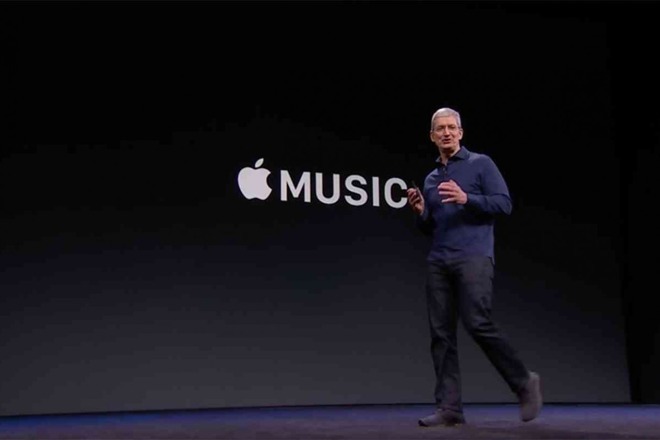
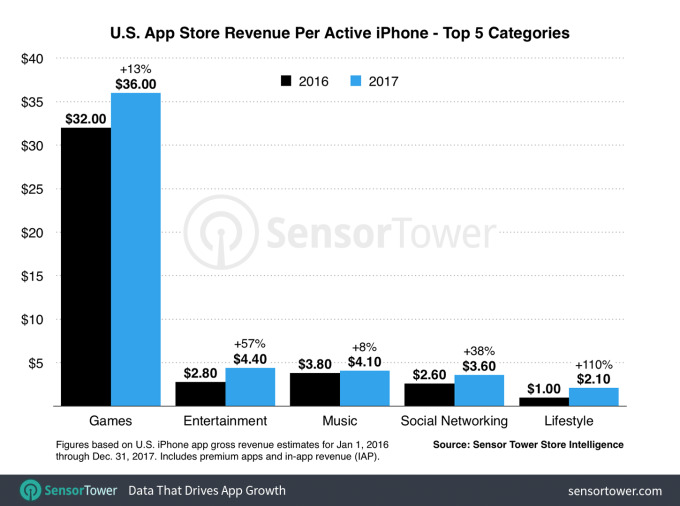
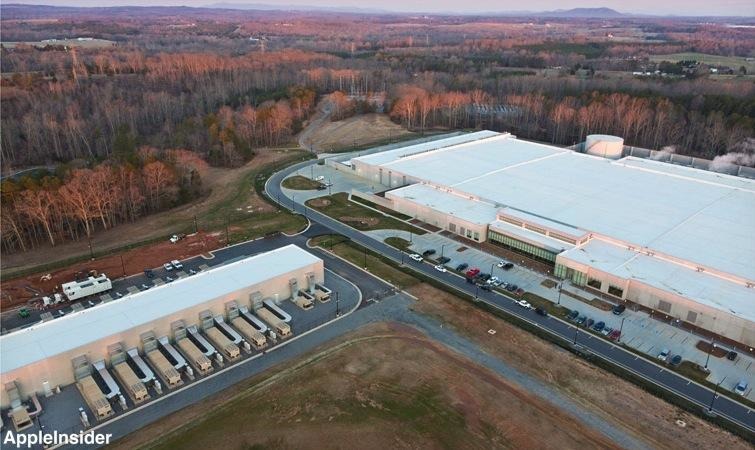
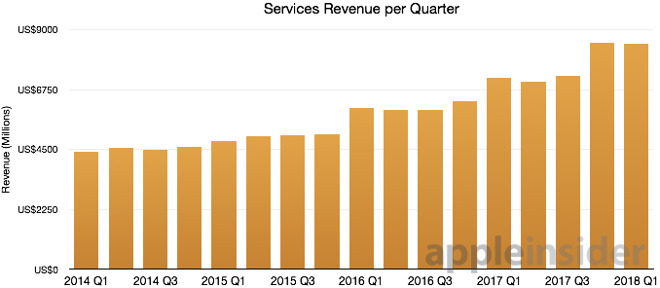







-m.jpg)





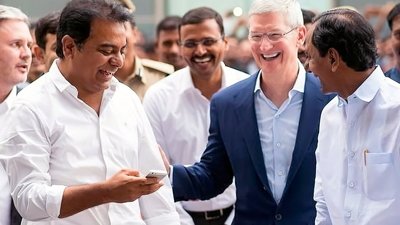
 William Gallagher
William Gallagher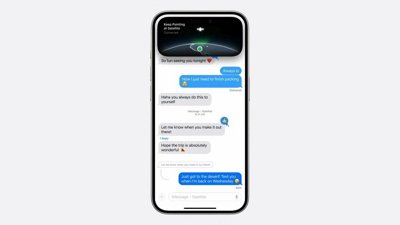
 Malcolm Owen
Malcolm Owen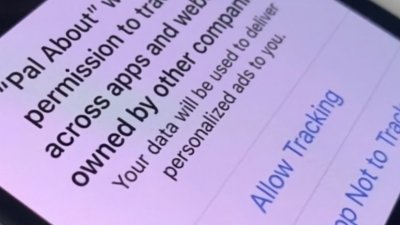

 Brian Patterson
Brian Patterson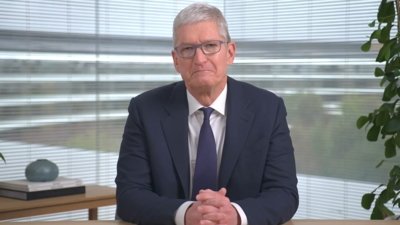
 Charles Martin
Charles Martin

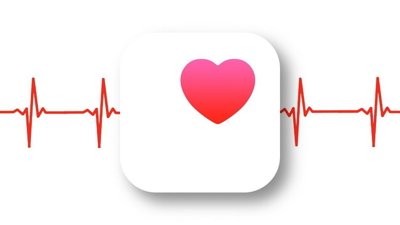

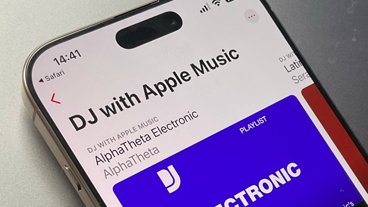






30 Comments
I think this statement:
should be
Amazon's 100 million Prime subscribers pay between $49 and $99 per year.
" to culture curated content into a cornucopia of cash creation." Excellent command of the English language. I like writing that makes me smile!
The people running Apple are competent. The company is in good hands. I have some AAPL in my IRA and those dividend deposits are welcome.